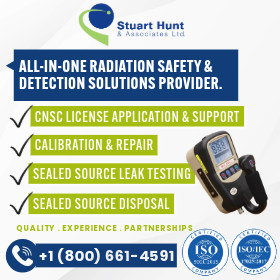Report: International Conference on Radiation Protection in Medicine—Achieving Change in Practice
Résumé
En décembre 2017, l’Agence internationale de l’énergie atomique (AIEA) organisait à Vienne l’International Conference on Radiation Protection in Medicine—Achieving change in practice (Congrès international sur la protection radiologique en médecine : changer les pratiques). Coparrainé par l’Organisation mondiale de la santé (OMS) et l’Organisation panaméricaine de la santé, le congrès donnait un aperçu des actions et des nouveautés discutées depuis le l’International Conference on Radiation Protection in Medicine—Setting the Scene for the Next Decade (Congrès international sur la protection radiologique en médecine : préparer la prochaine décennie), qui a eu lieu à Bonn, en Allemagne, en décembre 2012. Le rapport faisait surtout état de la réponse à l’appel à l’action de Bonn.


Vienna, Austria, December 11–15, 2017
In December 2017, the International Atomic Energy Agency (IAEA) hosted the International Conference on Radiation Protection in Medicine: Achieving Change in Practice, in Vienna. The conference was organized by the IAEA and co-sponsored by the World Health Organization (WHO) and the Pan American Health Organization (PAHO). It was the third international IAEA conference, following the International Conference on the Radiological Protection of Patients in Diagnostic and Interventional Radiology, Nuclear Medicine and Radiotherapy held in Malaga, Spain, in March 2001, and the Conference on Radiation Protection in Medicine—Setting the Scene for the Next Decade, held in Bonn, Germany, in December 2012.
The 2017 conference provided an overview of actions and developments discussed since the Bonn conference. Reporting focused on the status of the response to its Call for Action (see “The Bonn Call for Action” below) and reviewed the overall approach towards the implementation of the Bonn actions by relevant parties. The conference also explored how international organizations and other stakeholders can harmonize their actions for a better and more effective impact.
Stakeholders were given an opportunity to discuss new developments affecting radiation protection in medicine. New challenges were also discussed, as well as potential strategies and actions for a better implementation of the Bonn Call for Action.
The conference was a great success and attracted more than 530 participants from over 100 countries (including four Canadians). Participants representing 17 international organizations attended the conference. The conference secretary received 300 abstracts and 200 papers, and more than 80 participants presented their work in poster sessions. The entire conference was live-streamed on the IAEA website, which attracted 25,000 viewers from Facebook.
There were eight sessions, four roundtables, and three breakout sessions during the five days of the conference. Each session was dedicated to one or two actions from the Bonn conference, and the following topics were discussed:
- Justification of the use of radiation in medical imaging
- Radiation protection of patients and staff in diagnostic radiography, radiotherapy, nuclear medicine, interventional procedures, and dental imaging
- Radiation protection in medical exposure of children and pregnant women
- Radiation protection challenges in design and implementation of new technologies
At the end of each day, new topics were discussed in roundtables. There were also six presentations during the breaks that focused on or introduced other related topics, such as more details pertaining to the IAEA incident reporting system.
The Bonn Call for Action
The Bonn Call for Action identifies main actions essential to strengthening radiation protection in medicine. The IAEA and the WHO issued the call at the 2012 conference at the request of participants.
The Bonn Call for Action highlights 10 actions, specifies related sub-actions, and encourages all stakeholders to take part.
10 proposed actions:
- Enhance the implementation of the principle of justification
- Enhance the implementation of the principle of optimization of protection and safety
- Strengthen manufacturers’ role in contributing to the overall safety regime
- Strengthen radiation protection education and training of health professionals
- Shape and promote a strategic research agenda for radiation protection in medicine
- Increase availability of improved global information on medical exposures and occupational exposures in medicine
- Improve prevention of medical radiation incidents and accidents
- Strengthen radiation safety culture in health care
- Foster an improved radiation benefit-risk dialogue
- Strengthen the implementation of safety requirements globally
For more information on the Bonn Call for Action, visit www.iaea.org/sites/default/files/17/12/bonn-call-for-action.pdf
 Hamid Samavat
Hamid Samavat
Hamid Samavat, CRPA(R), has over 25 years’ experience in radiation-related fields. He has worked in health care in the fields of medical imaging and research, and as a medical physicist in cancer centres. He has been a radiation safety officer for Alberta Health Services since 2012.
Hamid Samavat, (A)ACRP, détient plus de 25 années d’expérience dans des domaines liées aux rayonnements. Il a travaillé en soins de la santé dans les domaines de l’imagerie médicale et de la recherche, ainsi que dans des centres de cancérologie en tant que physicien médical. Il est responsable de la radioprotection d’une région sanitaire de l’Alberta depuis 2012.


 Hamid Samavat
Hamid Samavat

